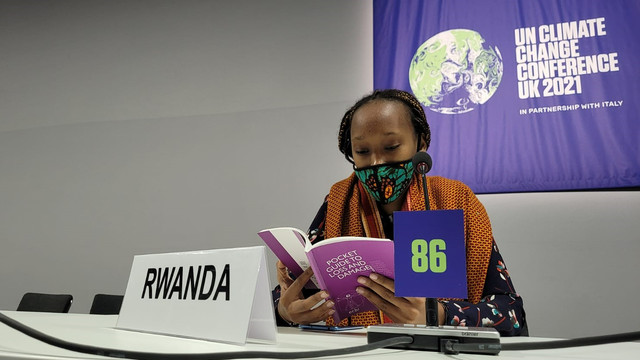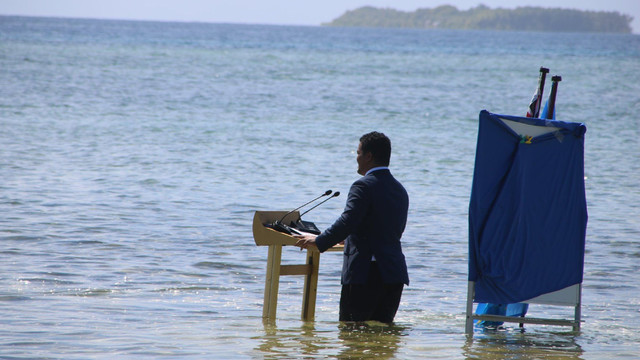Perspective of LDC youth: what COP26 outcomes will enhance global action on adaptation and resilience?
Young people from the LDCs have the energy and knowledge to drive climate action – but they need collaboration and investment from decision-makers at the national and international level.


Young people look out over terraced fields in Bhutan. Youth climate initiatives are essential to drive climate action (Photo: Curt Carnemark/World Bank, via Flickr, CC BY-NC-ND 2.0)
“Young people are the future, and we need to hand over a better world.” Youth often hear such sentiments – and we are grateful. But in the run-up to the UN climate talks (COP26) in November, young people from all sectors and countries need actions: collaboration, binding agreements and funding.
This year is the moment to reset and start building back better. As a main stakeholder, young people globally are doing what they do best: self-organising, disrupting and creating movements to drive collective global action to accelerate climate adaptation and build a resilient future.
But we are not homogenous. And more importantly, where we come from and are situated heavily influences our voice and agency.
This was the point I made as a speaker at a recent virtual event, hosted by IIED and the International Centre for Climate Change and Development (ICCCAD). Speakers from government, business and civil society each made their pitch for strong adaptation ambition at COP26, what they are doing about it, and how to judge what success will look like – for us all.
LDC youth still underrepresented in key places
While a growing number of youth climate initiatives are supported and brought into the fold by respective governments or international organisations, we hardly see representation from least developed countries' (LDC) youth.
As an LDC youth representative, I have to speak truth to power, and demand that governments, organisations and leaders uphold the equity, inclusivity and diversity they speak of, and integrate LDC voices in youth initiatives. As the IIED-ICCCAD event emphasised, the time for asking has passed: it is now time to demand.
Two crucial COP26 outcomes that will support LDC youth
LDC youth want to be heard and to contribute to decisions that will affect our future. I would like to pitch two areas for urgent climate action and outcomes from the COP26 process that will empower LDC youth.
1. Embed LDC youth leadership in decision-making
The absence of young people’s voices in decision-making is deafening, and even more of an issue for LDC youth. Globally, young people are largely relegated to advocacy roles. While these roles are valuable, they do not provide the platforms for providing meaningful input and action.
Young people face systemic and structural barriers, and more so for LDC youth due to political, economic and socio-cultural contexts. If you are poor, your priority is survival – not climate change; you do not have the bandwidth and means to think beyond your struggle to survive.
Even with knowledge about the climate crisis, you may not have the safe space or capacity or enabling environment to act, because larger and more overwhelming powers are at play. LDC youth fall short in scaling up and sustaining climate solutions due to lack of influence, funds or other forms of support.
We want LDC youth councils or groups established at national and international platforms to recognise us as a key stakeholder in decision-making. We are not looking for tokenism. We want global alliances between the developed, developing and LDC youth groups. We need to lift each other up.
2. Support social entrepreneurship and innovation for LDC youth
The young are on the frontline of disrupting systems to find solutions. Social entrepreneurship and innovation are largely youth driven. Reports suggest eight out of 10 people in the developing world will need to create their own jobs, illustrating that entrepreneurship is the solution.
We want impact funds, accelerators and mentoring programs targeted at social climate entrepreneurs. This is an opportunity for all world governments (including LDCs), international bodies and businesses to show responsible leadership and to join youth in building a social contract based on trust, collaboration and opportunity.
We are not asking for charity, we are asking that you invest in us. We ask you to work with us, to brainstorm with us, design and implement youth inclusive climate actions for adaptation.
My role in driving this change
Here in Bhutan, in addition to being a youth ally and advocate, I am a Climate Reality Leader, founding curator of Global Shapers Thimphu Hub, a consultant and entrepreneur ecosystem enabler.
We hold dialogues on climate change and climate education, building our narrative and call for action. I also work with entrepreneurs for nature positive and social enterprise start-ups. Climate change and the green economy are business opportunities – especially for youth as the job market shifts as economies decarbonise.
But we do this largely in a vacuum with no real collaboration and investment for growth, scale and impact. This restricts us to taking only a step or two when we could be making leaps and bounds. We are not in the boardrooms of corporates, nor cabinets of political parties nor policymaking rooms of governments.
We need these decision-makers to join us and let us join them, to meet each other where we are, and learn from each other. We need intergenerational allyship to solve these intergenerational challenges.
If we are the future, let us work together for that future.




